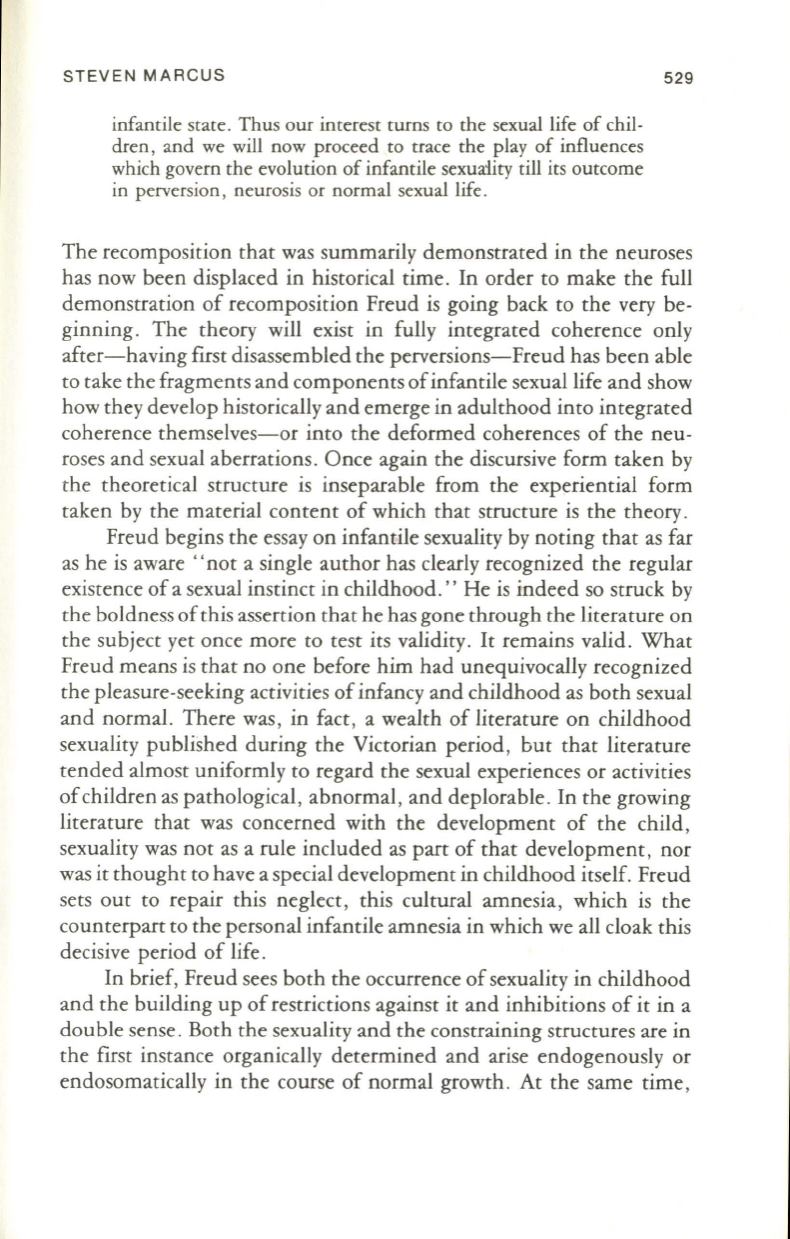
STEVEN MARCUS
infantile state . Thus our interest turns to the sexual life of chil–
dren, and we will now proceed to trace the play of influences
which govern the evolution of infantile sexuafity till its outcome
in perversion , neurosis or normal sexual life .
529
The recomposition that was summarily demonstrated in the neuroses
has now been displaced in historical time. In order to make the full
demonstration of recomposition Freud is going back to the very be–
ginning. The theory will exist in fully integrated coherence only
after-having fIrst disassembled the perversions-Freud has been able
to take the fragments and components ofinfantile sexual life and show
how they develop historically and emerge in adulthood into integrated
coherence themselves-or into the deformed coherences of the neu–
roses and sexual aberrations . Once again the discursive form taken by
the theoretical structure is inseparable from the experiential form
taken by the material content of which that structure is the theory.
Freud begins the essay on infantile sexuality by noting that as far
as he is aware "not a single author has clearly recognized the regular
existence of a sexual instinct in childhood ." He is indeed so struck by
the boldness of this assertion that he has gone through the literature on
the subject yet once more to test its validity .
It
remains valid. What
Freud means is that no one before him had unequivocally recognized
the pleasure-seeking activities of infancy and childhood as both sexual
and normal. There was, in fact, a wealth of literature on childhood
sexuality published during the Victorian period, bur that literature
tended almost uniformly to regard the sexual experiences or activities
ofchildren as pathological, abnormal, and deplorable. In the growing
literature that was concerned with the development of the child,
sexuality was not as a rule included as part of that development, nor
was it thought to have a special development in childhood itself. Freud
sets out to repair this neglect, this cultural amnesia, which is the
counterpart to the personal infantile amnesia in which we all cloak this
decisive period of life.
In brief, Freud sees both the occurrence of sexuality in childhood
and the building up of restrictions against it and inhibitions of it in a
double sense . Both the sexuality and the constraining structures are in
the fIrst instance organically determined and arise endogenously or
endosomatically in the course of normal growth. At the same time,


